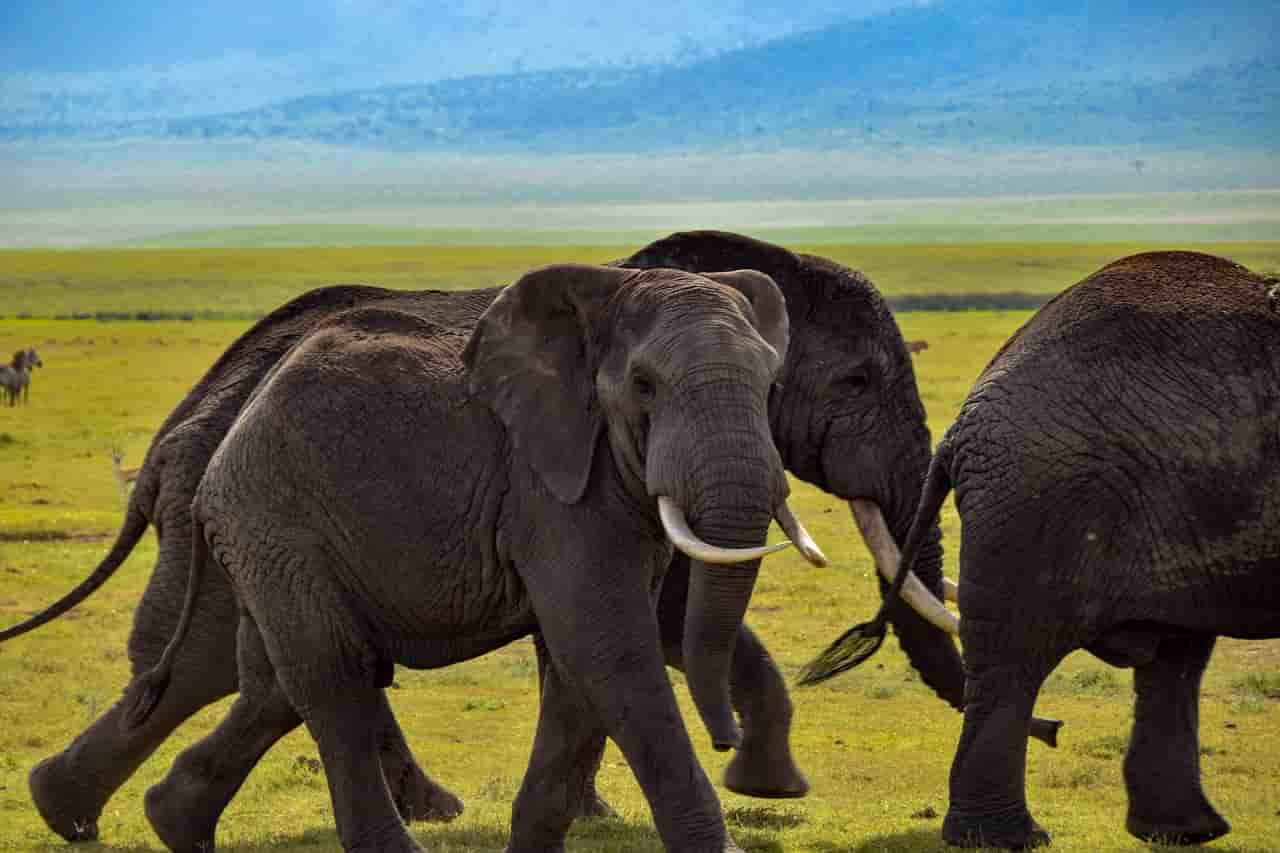

A Tanzania safari is more than a holiday, it’s an encounter with nature at its most raw and breathtaking. From the endless plains of the Serengeti to the wildlife-rich Ngorongoro Crater and the legendary baobab landscapes of Tarangire, Tanzania offers a safari experience that feels like stepping into a living documentary.
For many travelers, the Serengeti is the soul of Tanzania’s safari circuit. Its vast grasslands host the Great Wildebeest Migration—the world’s most dramatic wildlife event and one of the Seven Natural Wonders of Africa.
Picture this:
Over 1.5 million wildebeest, accompanied by zebras and gazelles, thunder across the plains as predators like lions, leopards, and cheetahs follow closely. Whether you’re witnessing the Mara River crossings—where crocodiles lie in wait—or the calving season when 8,000 newborns arrive daily, every moment feels like a real-life wildlife documentary.
Ngorongoro Crater is often described as a “Garden of Eden.” This vast volcanic caldera is home to one of the densest populations of wildlife on earth. Because the crater walls keep animals within the ecosystem, sightings are incredibly consistent.
Here, you can expect to spot:
The Big Five (lion, elephant, buffalo, rhino, leopard)
Flamingos painting the shores pink
Endangered black rhinos grazing peacefully
Lions lounging in the afternoon sun
The crater’s lush greenery makes it a haven for photographers, bird watchers, and first-time safari travelers.
Tarangire National Park is a paradise for elephant lovers. During the dry season, massive herds—sometimes up to 200 strong—gather along the Tarangire River. The park’s ancient baobab trees add a mystical charm to the landscape.
Expect to encounter:
Majestic elephant families
More than 500 bird species
Tree-climbing lions
Peaceful, less-crowded game drives
Tarangire’s quiet atmosphere makes it an ideal stop for travelers who want a slower, more intimate safari experience.
Lake Manyara National Park may be smaller than the Serengeti, but it’s known for its dramatic landscapes—from dense rainforests to sweeping lakeshores. The soda lake attracts thousands of flamingos, creating a photogenic pink horizon.
You might also spot:
Tree-climbing lions
Families of baboons
Blue monkeys in the forest canopies
Elegant giraffes striding across open plains
It’s a perfect add-on for travelers looking to see diverse ecosystems in a short time.
While Tanzania is a year-round safari destination, the best time depends on your goals:
Great Migration (River Crossings): July–October
Calving Season: January–March
General Game Viewing: June–October
Green Season Photography: November–December
Home to the Serengeti & Ngorongoro Crater (both UNESCO sites)
Massive wildlife populations
Breathtaking landscapes unlike anywhere else
High-quality lodges, tented camps & guided tours
A perfect blend of luxury and raw wilderness
A safari in Tanzania isn’t only about wildlife—it’s also a chance to experience rich cultural traditions. The Maasai people, known for their iconic red shukas and deep connection to the land, often welcome travelers to learn about their pastoral lifestyle. Visitors can explore traditional bomas, watch dances, and gain insight into centuries-old customs.
For a truly unique experience, you can also meet the Hadzabe tribe near Lake Eyasi—one of the last remaining hunter-gatherer communities in East Africa. They demonstrate ancient hunting techniques, fire-making skills, and their deep relationship with the natural world.
One of the most unforgettable experiences in Tanzania is a hot air balloon safari over the Serengeti. As the sun rises and wildlife awakens, travelers float silently above the plains—watching herds move below and witnessing the landscape transform in golden morning light. It’s peaceful, magical, and perfect for honeymooners or photographers.
Tanzania caters to every type of traveler—from budget explorers to luxury seekers. Many lodges combine comfort with immersion in nature. Imagine:
Romantic tented suites overlooking the savannah
Infinity pools facing wildlife corridors
Fine dining under the African stars
Night-time campfires with stories from expert guides
Some luxury camps even move seasonally to keep up with the Great Migration, ensuring you’re always in the heart of the action.
Choosing the right time to visit depends on your safari goals:
Great Migration River Crossings: July–October
Calving Season: January–March
General Wildlife Viewing: June–October
Green Season (lush scenery & great photography): November–December
No matter when you go, Tanzania offers spectacular sightings year-round.
A Tanzania safari is a transformative journey—one that reconnects you with nature and leaves you with memories that stay long after you’ve left Africa. Whether you’re a solo traveler, couple, or adventurer at heart, Tanzania promises an unforgettable experience filled with wildlife, wonder, and soul-stirring landscapes.